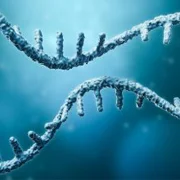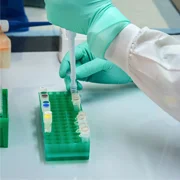| Species | Hamster |
| Cat.No | ABC-X0060F |
| Quality Control | All cells test negative for mycoplasma, bacteria, yeast, and fungi. |
| Product Category | Transfected Stable Cell Lines |
| Size/Quantity | 1 vial |
| Cell Type | Epithelial |
| Shipping Info | Dry Ice |
| Growth Conditions | 37 ℃, 5% CO2 |
| Source Organ | Ovary |
| Disease | Normal |
| Biosafety Level | 1 |
| Storage | Liquid Nitrogen |
| Product Type | Overexpression Stable Cell Lines |
| Host Cell | CHO-K1 |
Description
G protein-coupled receptors (GPCRs) are the largest membrane protein family in humans and represent important targets for many drugs. With over 800 members in the GPCR family, nearly 400 can be considered as potential drug targets. GPCR-targeting drugs account for 34% of all FDA-approved medications, primarily used for conditions like hypertension, diabetes, obesity, allergies, Alzheimer’s disease, and various central nervous system disorders.GPCR activation involves two signaling pathways: G protein-dependent and non-G protein-dependent pathways. In the G protein-dependent pathway, GPCRs couple with intracellular G proteins (Gi/Go, Gs, Gq, and G12/G13), leading to activation or inhibition of signals that can be detected through second messengers like calcium flux, cyclic adenosine monophosphate (cAMP), etc. The non-G protein-dependent pathway involves GPCR-induced β-arrestin translocation, independent of G protein receptor signaling, and can be utilized for orphan receptors, allowing the detection of non-G protein-dependent pathway activation.CCR8 is the only known receptor for CCL1. CCL1 is secreted by tumor stromal cells and tumor-associated macrophages into the cancer microenvironment, where it activates the CCR8 receptor on cancer cells, promoting their proliferation, migration, and resistance to apoptosis. Additionally, it induces angiogenesis via the activation of CCR8 on endothelial cells. Another key function of CCL1 is recruiting regulatory T cells (Treg) to the tumor niche, leading to the conversion of CD4+ T cells into Tregs. CCR8 is specifically expressed on regulatory T cells infiltrating tumors but is barely expressed on peripheral blood Tregs or normal tissues, making it a promising target for cancer therapy.The Tango-CCR8-CHO-K1 Cell Line utilizes CHO-K1 cells as host cells and integrates the Tango technology to construct a cell line with a Tango CCR8 reporter gene. Upon ligand activation of the CCR8 Arrestin pathway, Arrestin carries protein kinases that cut transcriptional activation elements, leading to their translocation to the cell nucleus and activating the luciferase reporter gene. The Luciferase reporter gene readout indicates the effectiveness of the signaling pathway activation, making it suitable for detecting the activity of functional antibodies targeting CCR8.




